Events
Saturday February 13 and Sunday February 14
OPENING OF THE VILLA VASSILIEFF
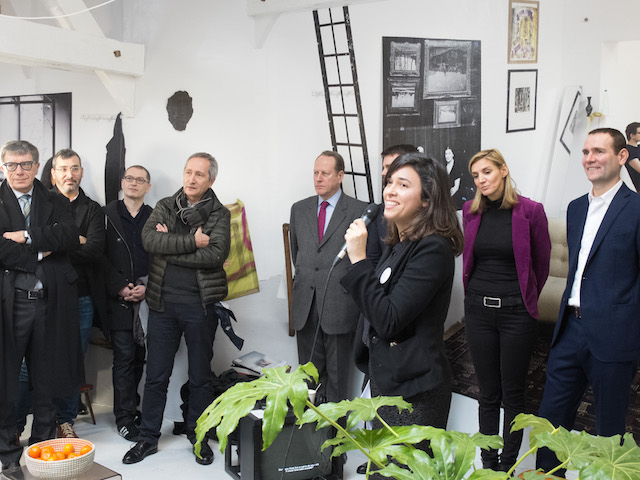
- Vernissage de l’exposition "Groupe Mobile" lors du week-end inaugural de la Villa Vassilieff, samedi 13 et dimanche 14 février 2016. Image : Villa Vassilieff.
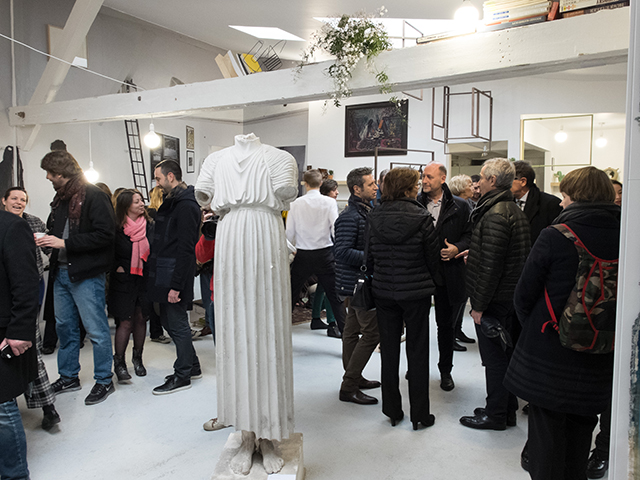
- Opening of the « Groupe Mobile » exhibition during the inaugural week-end of Villa Vassilieff, on the 13th and 14th of February 2016. Image: Villa Vassilieff.
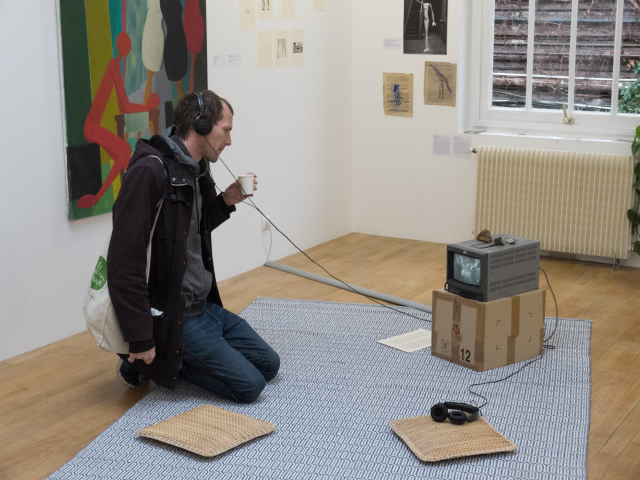
- Opening of the « Groupe Mobile » exhibition during the inaugural week-end of Villa Vassilieff, on the 13th and 14th of February 2016. Image: Villa Vassilieff.
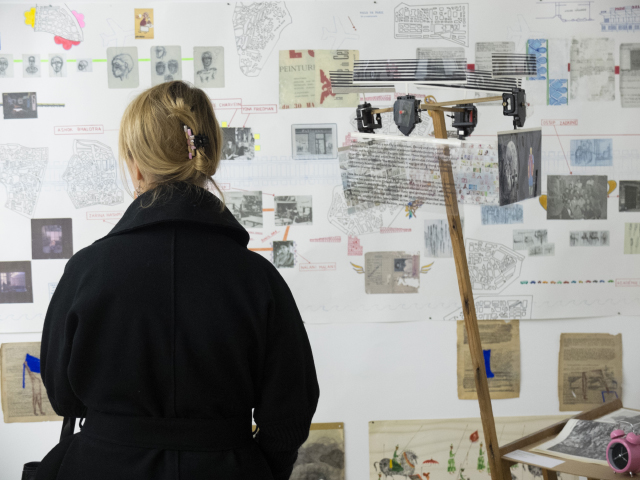
- Opening of the « Groupe Mobile » exhibition during the inaugural week-end of Villa Vassilieff, on the 13th and 14th of February 2016. Image: Villa Vassilieff.
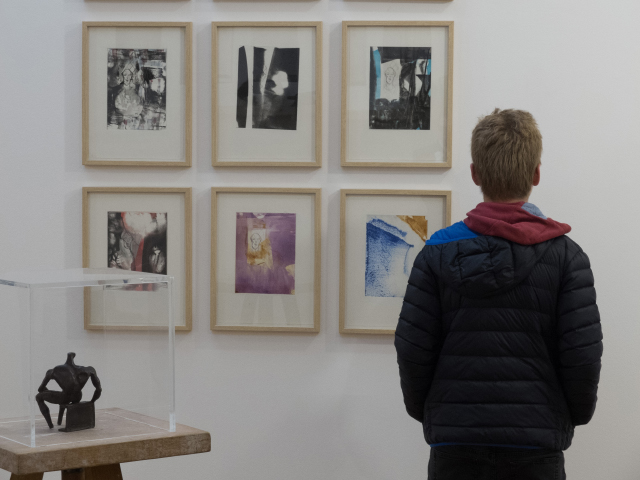
- Opening of the « Groupe Mobile » exhibition during the inaugural week-end of Villa Vassilieff, on the 13th and 14th of February 2016. Image: Villa Vassilieff.
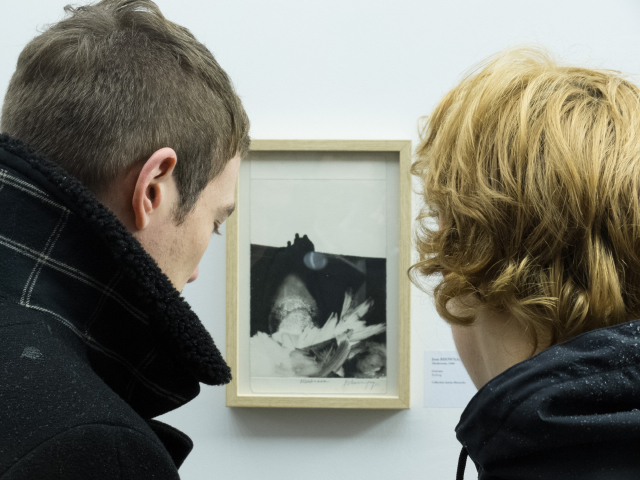
- Opening of the « Groupe Mobile » exhibition during the inaugural week-end of Villa Vassilieff, on the 13th and 14th of February 2016. Image: Villa Vassilieff.
Tuesday February 16 from 7 p.m to 8.30 p.
At Villa Vassilieff
REDISCOVERING MARC VAUX FUNDS
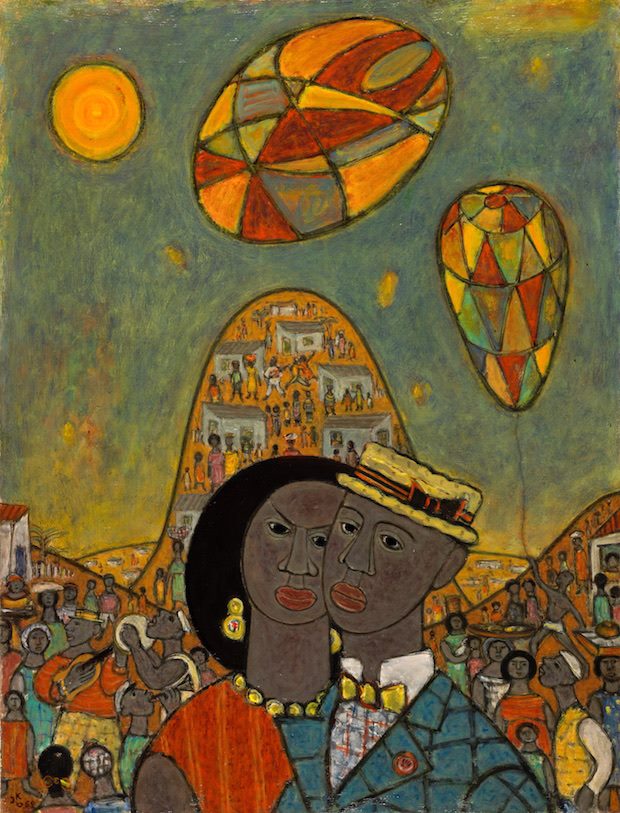
- J.D. Kirszenbaum, Célébration de la Saint-Jean à São Paulo, 1952, FNAC 29874, Centre national des arts plastiques © all rights reserved / CNAP / photography: Yves Chenot.
Conversation with Didier Schulmann (Curator, National Museum of Modern Art, Kandinsky Library), Nathan Diament (great nephew of J.D. Kirszenbaum, whose oeuvre was partially rediscovered thanks to the Marc Vaux funds), Joanna Fiduccia (art historian, specialist of Giacometti), Julie Martin (co-author with Billy Klüver of the book Kiki et Montparnasse 1900-1930, published in 1989) and Ellie Armon Azoulay (associate researcher, Villa Vassilieff).
Who was Marc Vaux ? The answer to this question varies with every visit to the funds, kept in the Centre Pompidou since the photographer passed away in 1971. At first, it appears as a spectacular, perfectly structured pile of thousands of cardboard boxes, bearing family names — at times misspelled — for more than 6000 artists who were active in Paris between the early 20s and the end of the 60s, whose studios Marc Vaux visited to photograph their works. This evening invites art historians, researchers and experts in the Marc Vaux funds to activate some of the materials presented in the Groupe Mobile exhibition and draw the paths of mutliples stories that can be found in the margins of its photographs.
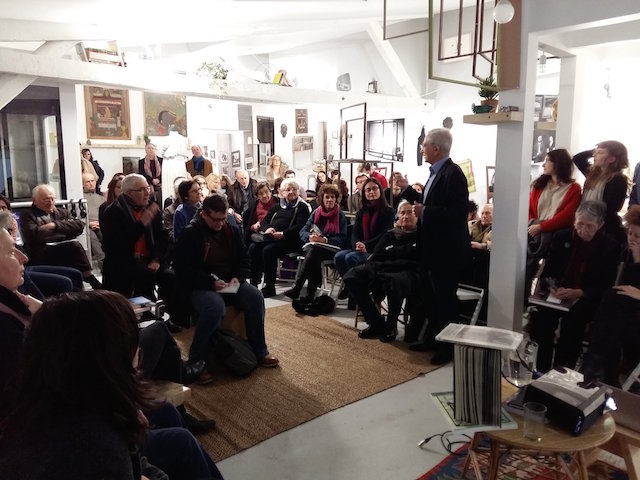
Saturday February 20 from 4 p.m to 8 p.m
At Villa Vassilieff
SLAUGHTER IN CINEMA
Carte Blanche to Clark House Initiative
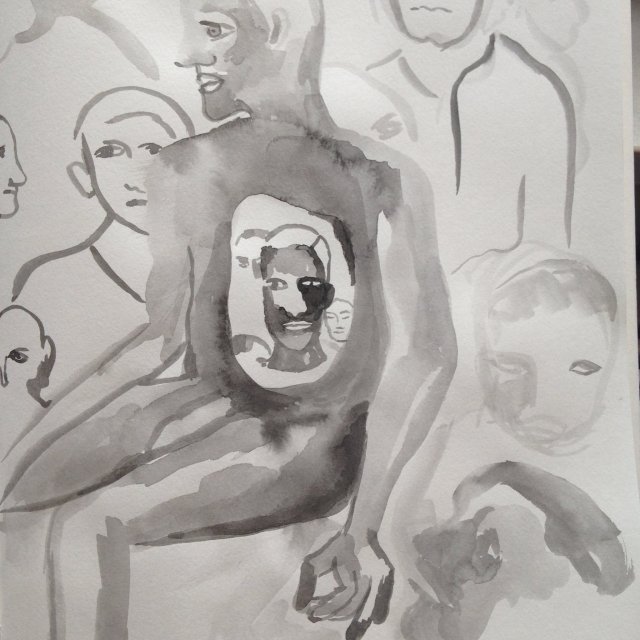
- Sawangwongse Yanghwe, "Bhupen Dream", 2016, ink & Watercolour on Paper.
Tyeb Mehta’s depiction of the abattoir in an India just independent, and Georges Franju’s commencement of the Nouvelle Vague with Le Sang Des Bêtes are somewhere brought together in the voyeurism and de-humanization of Cristiana de Marchi’s performance in an Emirati slaughterhouse for sheep. They become the plot for a conversation between Yogesh Barve and Kemi Bassene (artists presented in the Groupe Mobile exhibition), Caecilia Tripp, Aurélien Mole, Eric Stephany (artists) and Sumesh Sharma (member of Clark House Initiative and associate curator to Groupe Mobile). They resonate with Laurent Brégeat’s interviews of Indian modernists such as Krishna Reddy. In its depiction and interdiction, beef becomes the context of a conversation on expression and imagination.
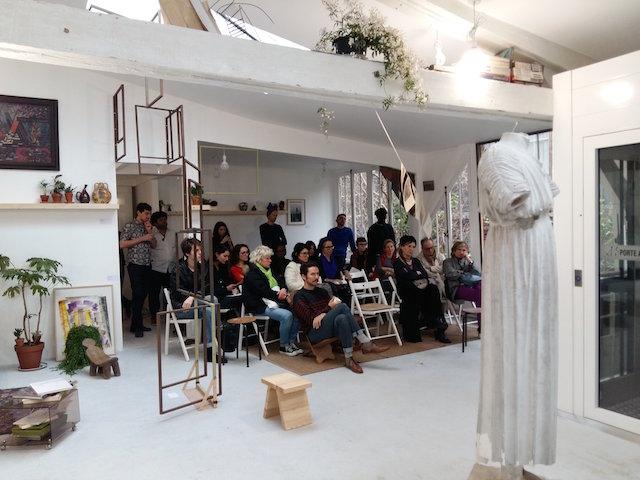
Saturday June 4, 4 p.m
At Villa Vassilieff
PERFORMANCE - Wedding Revelry / Rivalry
Amol K. Patil and Naresh Kumar
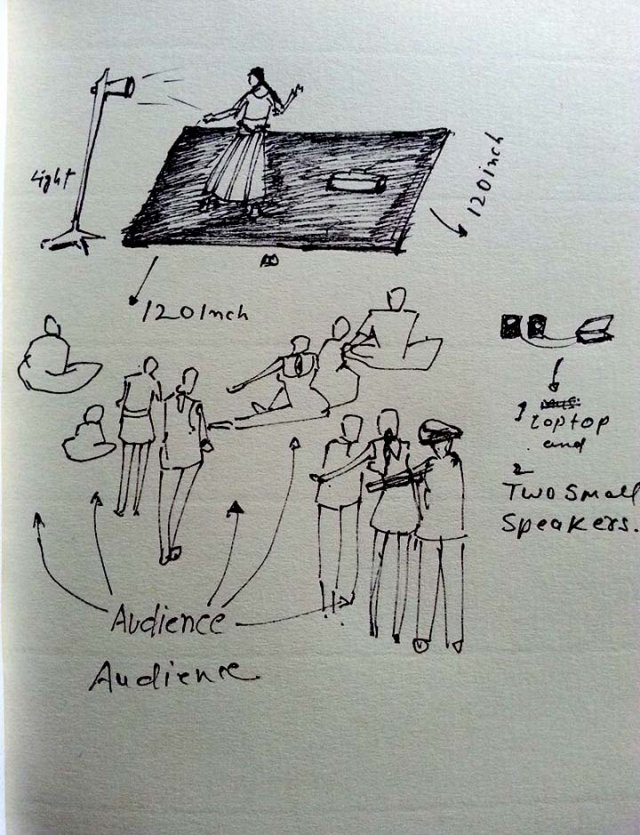
- Drawing for Naresh Kumar’s performance, 2016.
Lathi-Khati, Amol K. Patil, 15 min
Amol K. Patil performs Lathi-Kathi, a form of martial dance popular in weddings in the Western State of Maharashtra, where a man performs with a twig. Before British colonial rule, the Lathi-Kathi was martial form used in wars, yet alongside the expansion of sophisticated forms of war and colonial restriction, the dance soon was converted into a cultural form of dance employed for entertainment at religious events. Amol K. Patil and his family travelled across the state of Maharashtra to perform these dances at weddings where they were invited to entertain the guests.
His community in India, the Dalits or better knows as Mahars, became the backbone of the British Army and contributed to the city’s public services such as sanitation and municipal works. Nonetheless, they kept elements of their cultural engagements in their social housing projects and slums, which by the 1960s and 70s became a place for the avant-garde movement of theatre, poetry and music against exclusion from society, due to the apartheid of their background. They embedded the republican understanding of the citizen—based on the movement begun by Dr BR Ambedkar, the architect of the Indian Constitution, which is an amalgamation of the French constitution, British Laws, American Charter for Freedoms and the ideas of Equality, Fraternity and Liberty.
Amol K. Patil’s grandfather animated these ideas through his nomadic poet existence, travelling to villages spreading to the unlettered and illiterate the ideals of the constitution, which had been written to abolish those of his caste. His father was an avant-garde playwright who wrote complex plays on the notion of immigration and urban life in Bombay. Amol K. Patil as a visual artist who continues a practice that reflects on this particularity that arises out of identity often animated in archives, letters and his mother’s memories about his father and grandfather into performances and objects that rather reflect on the present. Art and his practice allow him to travel the world be part of exhibitions and contest the discrimination of visas and accessibility. By re-enacting Lathi-Kathi, he makes a performance contextualising his ability to travel, referencing the folkloric perception of his family’s movement around Maharashtra.
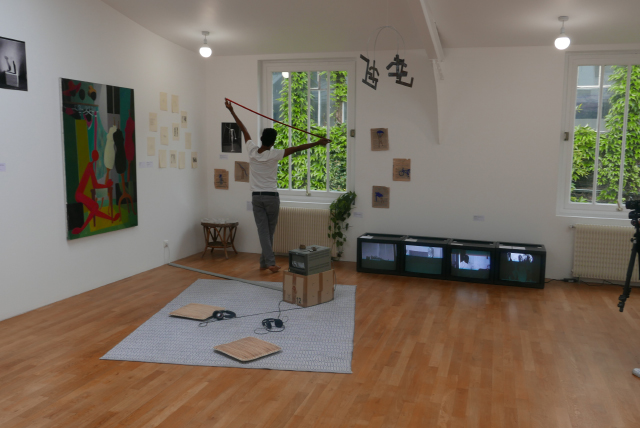
- « Lathi-Kathi », Amol K. Patil, performance for Wedding Revelry / Rivalry, ca. 15 min, June 4th 2016, Villa Vassilieff.
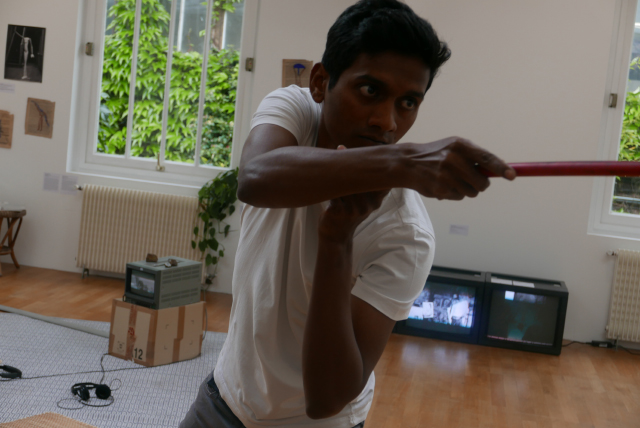
- « Lathi-Kathi », Amol K. Patil, performance for Wedding Revelry / Rivalry, ca. 15 min, June 4th 2016, Villa Vassilieff.
Appetency, Naresh Kumar, 38 min
Transgender issues and social class have had and continue to have resonances across the globe. Identity has been better defined in the postmodern world and was left ambiguous in the pre-colonial society and until recently in the villages of India.
For weddings in eastern India, specifically in the state of Bihar, a transgender or a man would dress as the bride and then dance to music with erotic overtones. The dance was a form of education to the newly wed to inform the role of sex in quotidian life. Launda, is literally translated as Young Boy or Young & Gay, was a dance performed by men who came from the lower socio-economic backgrounds. The aristocracy and the bourgeoisie frowned upon artistic practices, such as music and dance, as the society embedded Catholic prudish behaviour into its fold. With changing times and a penchant for aspirational modernism the Launda dance was done away with, replaced by a more misogynist and objectifying alternative in Bollywood. Transgender and non-defined sexuality that lay in the grey were outside the definitions of a modern nuclear family.
Bihar was one of the longest colonised states under British rule. Here, the British forced cultivators to grow Indigo and opium, cash crops that led to terrible famines. This lead to a great migration to South Africa, Trinidad Tobago, Suriname, Guyana, Fiji and Jamaica, creating the largest colonial diaspora after those displaced by the slave trade. In remembering the act, Joseph Beuys allowed the idea of the shaman performer to take on the role of the artist.
Here, Naresh Kumar references this shaman performer and employs Marcel Duchamp and John Cage’s experimental music in combination with traditional Bihari music from the Caribbean, where the practice of the Launda dance has persisted as nostalgic act to perform, in ode to conceptual performance and its role in democratizing art. Naresh Kumar is interested in examining how travel and immigration find hybrid centres of authenticity and how we experience them in the contemporaneity through referencing modernity, pre-colonial and colonial trajectories.
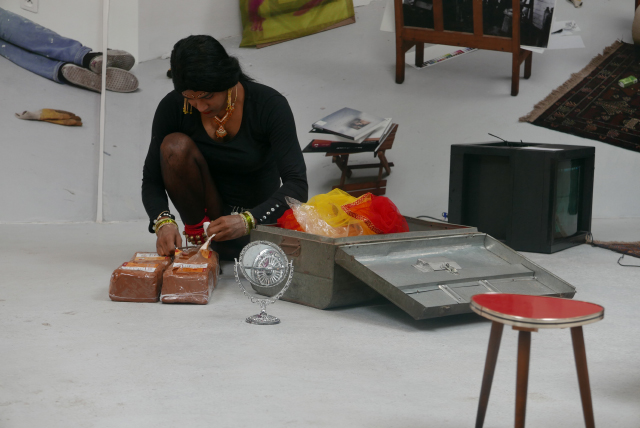
- « Appetency » Naresh Kumar, performance for Wedding Revelry / Rivalry, ca. 38 min, June 4th 2016, Villa Vassilieff.
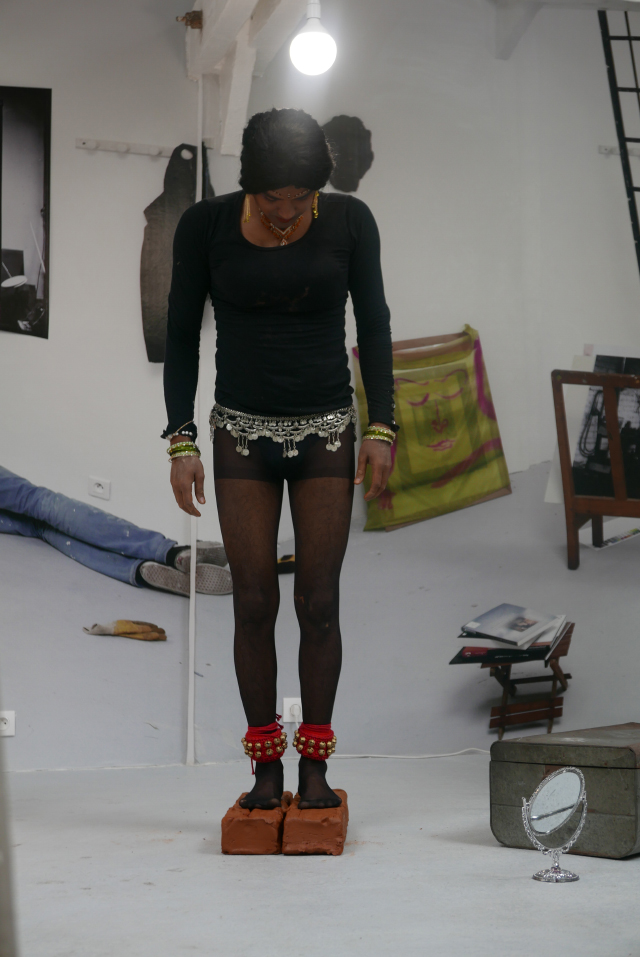
- « Appetency » Naresh Kumar, performance for Wedding Revelry / Rivalry, ca. 38 min, June 4th 2016, Villa Vassilieff.
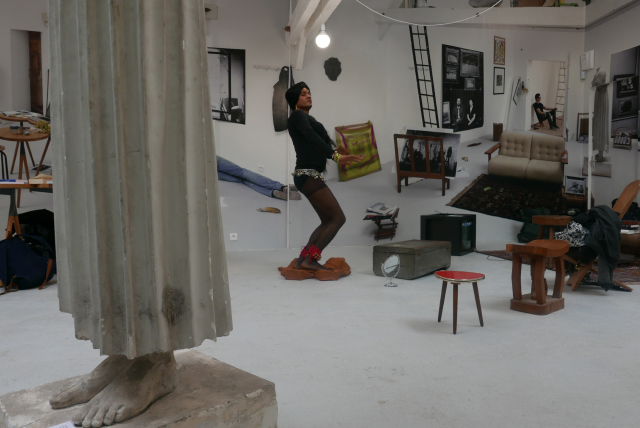
- « Appetency » Naresh Kumar, performance for Wedding Revelry / Rivalry, ca. 38 min, June 4th 2016, Villa Vassilieff.
Saturday June 11 from 11am to 12:30am
THE SENTIENT BODY : SLIVER AND SPLIT
Discussion and meeting with artist Sonia Khurana, currently on show in the exhibition Groupe Mobile.
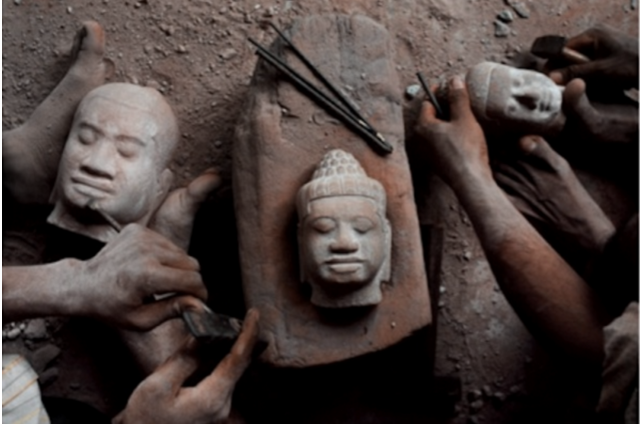
The treatment of the body in the domain of art and in the world has been and continues to be a contentious issue, raising questions of cultural fragmentation, the circulation of the imagined and physical body and the interchangeability of perceptions. By putting these questions into practice, the performative video and photographic artwork of Sonia Khurana, whose piece Bird is currently on show at Villa Vassilieff, instigates a theoretical and practical enquiry into modernist, feminist and cultural discourses. The questions and enquiries Khurana brings to her work acts as a prompt for the viewer to problematize a definition of ‘the body,’ its materiality and to question precisely the definition of the sentient body. Khurana interrogates and dis-members the canonical Eurocentric gaze of the body, through references to high Modernists castes such as Brancusi, only to reassemble certain fragments and highlight the interwoven nature of the self and other. In doing so Khurana traces the trajectory of the body throughout history and decenters the Eurocentric gaze to foreground alternative subjectivities.
For this session Khurana will be discussing her work Head-Hand:
"The two body parts, the head and the hand, the primary sites of social interaction, meet in an intimate encounter. Their differences become spaces of encounter; spaces of communality and transmission, affection, trust and attachment neither in spite of nor because of difference, but rather precisely through their difference. Khurana thus addresses identity politics here as a work of connections, rather than deconstructions, as an expedition into reflections, rather than diffractions." [Excerpt from essay: Body, relation and reciprocity: Artworks by Sonia Khurana by Elena Trivelli and Leon Wainwright, 2015.]
Sonia Khurana will also take part in the seminar Crossing division lines. Transnational feminism and cultural studies organized by the research group Travelling Féministe of the Centre audiovisuel Simone de Beauvoir and Espace Khiasma, on Friday June 10 at Espace Khiasma. More information here.
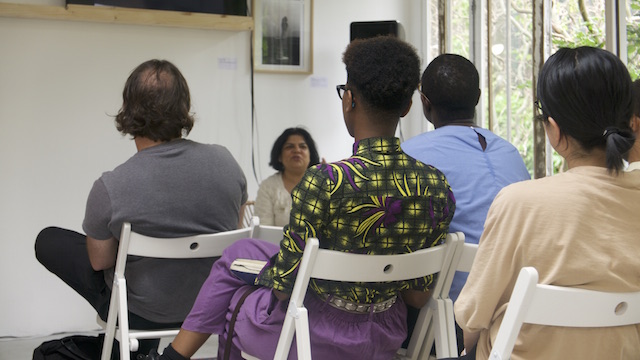
- Rencontre avec Sonia Khurana, dans le cadre de The Sentient Body: Silver and Split, 11 Juin 2016, Villa Vassilieff.
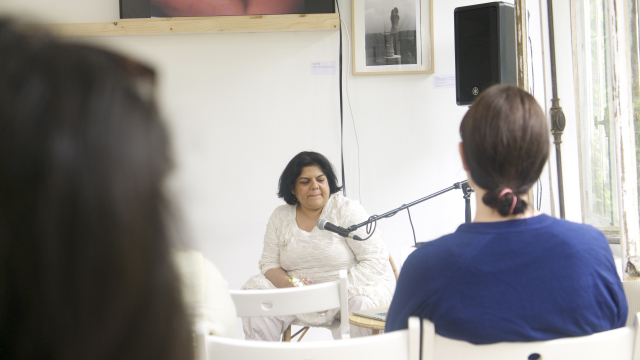
- Conversation with Sonia Khurana, as part of The Sentient Body: Silver and Split, June 11th 2016, Villa Vassilieff.
From 2 p.m to 6.30 p.m
LOOKING FOR POWER : BUDDHA IMAGES, A CAMBODIAN CASE STUDY
Workhop and meeting with Erin Gleeson (art historian, director of Sa Sa Bassac, Cambodia).
This workshop will revolve around the figure of a dismembered Buddha, held at the Guimet Museum in Paris, a figure which embodies a series of issues related to the constitution of ethnographic collections, the construction of a euro-centric view of their objects and colonial museology development, particularly in Southeast Asia. It will begin with a visit to the Musée Guimet.
"The move from aniconic to anthropomorphic representations of Buddha is yoked to changing notions of aliveness, multiplicity, interchangeability, and likeness or trace, among others. Using examples of whole and fragmented “Buddhist” statuary belonging to Cambodian history past and present, we will review select secular, religious, animate and inanimate methods of production and curatorial treatment. Throughout, we will consider our options of interaction and relation with this imagery, noting the act of looking itself and its links with leveraging power." - Erin Gleeson.
This event takes part in the worshop and meeting program Between the cards organized by Villa Vassilieff in partnership with Collège d’Etudes Mondiales at Fondation Maison des Sciences de l’Homme and with the support of Pernod Ricard (Pernod Ricard Fellowship) and of Fondation Nationale des Arts Graphiques et Plastiques. In partnership with Espace Khiasma.
Saturday June 18 from 5pm to 7 pm
At Villa Vassilieff
MEDITATIONS : readings of Jean Bhownagary’ poetry
With Janine Bharucha and Sarah Petronio .
Jean Bhownagary was at once film producer, potter, engraver and poet, a Jack-of-all-trades who melt artistic genres in his parisian apartment where he lives since the early 1950’s. Known for his great hospitality, he hosted young indian artists coming as students in Paris, receiving them for a laundry, a coffee or even for babysit his girls.
It’s will be to the generosity and the poetry of a man who tell another history of the cosmopolitan Paris that Janine Bharucha and Sarah Petronio pay tribute with this poetry reading Saturday June 18th at 5pm.
As part of the festival Quinze Cent Coups.
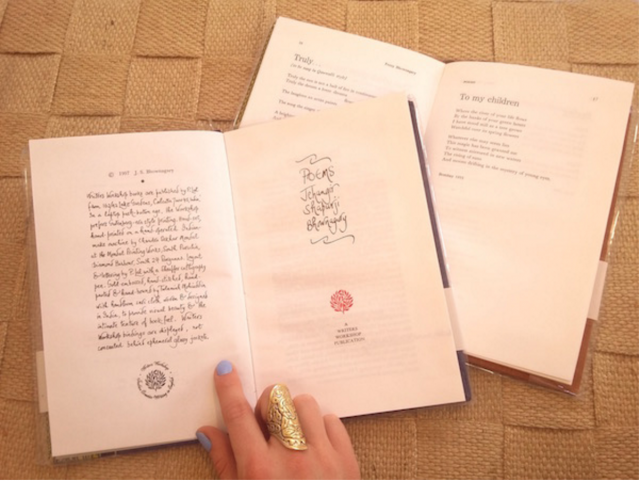
- View of Jean Bhownagary’s poems book, courtesy of Janine and Asha Bharucha collection. Image : Villa Vasilieff.
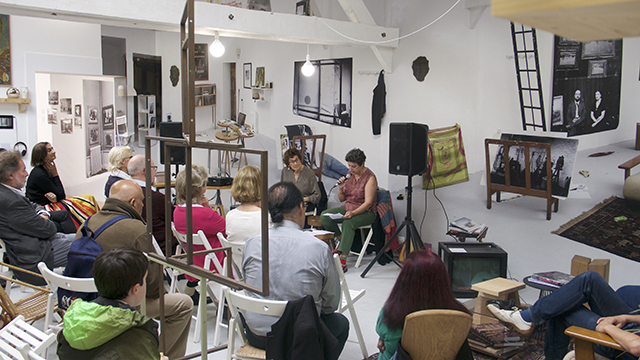
- Reading by Janine Bharucha and Sarah Petronio, as part of MEDITATIONS : lecture des poèmes de Jean Bhownagary June 18th 2016, Villa Vassilieff.
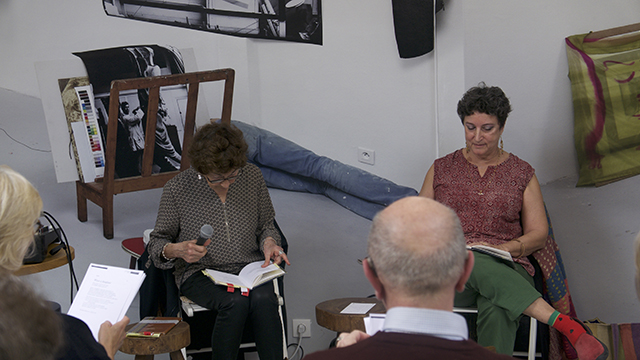
- Reading by Janine Bharucha and Sarah Petronio, as part of MEDITATIONS : lecture des poèmes de Jean Bhownagary June 18th 2016, Villa Vassilieff.
Partager